An earthquake swarm is a series of small to moderate earthquakes that occur in a localized area over a short period of time. Unlike a typical earthquake sequence, where a large mainshock is followed by smaller aftershocks, an earthquake swarm has no clearly dominant quake. Instead, the quakes are of similar magnitudes and can strike minutes, hours, or days apart. This pattern can alarm residents because it often feels like the ground is constantly shaking, even if no single quake is catastrophic.
Why Do Earthquake Swarms Happen?
Earthquake swarms can be triggered by both tectonic and magmatic activity. In tectonic settings, stress builds up along faults and is released in bursts. In volcanic regions, swarms are often caused by the movement of magma beneath the surface. Water infiltration, such as after heavy rains, can also increase pressure in underground rock formations, potentially leading to swarms.
For example, in peninsular India, swarms have been linked to changes in groundwater pressure. A 2008 study found that a 10-meter rise in the water table could raise internal rock pressure by 1 atmosphere, triggering multiple small quakes.
Are Earthquake Swarms a Sign of a Bigger Quake Coming?
Not necessarily. While some swarms precede larger quakes, most do not lead to a significant seismic event. Scientists are cautious when assessing the risk because predicting earthquakes is still imprecise. Each swarm is analyzed individually, based on local geology and activity patterns.
How Long Do Earthquake Swarms Typically Last?
The duration of an earthquake swarm can vary greatly. Some last a few hours, while others continue for days, weeks, or even months. The frequency and intensity of quakes often change over time. In Greece, for example, an earthquake swarm around Santorini in 2025 led to repeated tremors over several weeks, prompting evacuations and emergency declarations.
Where Do Earthquake Swarms Commonly Occur?
Earthquake swarms can occur anywhere in the world but are more frequent in volcanically active regions or areas with complex fault systems. Notable locations include:
- Santorini, Greece
- Yellowstone National Park, USA
- Peninsular India
- Japan
- Iceland
These areas often experience interactions between tectonic and magmatic forces that trigger swarms.
Can Earthquake Swarms Be Predicted?
At present, earthquake swarms cannot be precisely predicted. Seismologists can identify regions that are prone to swarms and monitor them closely, but determining when or if a swarm will begin—or escalate—is extremely difficult.
However, tools like seismographs, GPS, and satellite imaging help scientists detect early signs of seismic stress and magma movement, giving authorities time to issue warnings and take precautions.
What Should You Do During an Earthquake Swarm?
If you live in or visit an area experiencing an earthquake swarm, follow standard earthquake safety guidelines:
- Drop, Cover, and Hold On during any shaking.
- Stay away from windows, tall furniture, and unstable structures.
- Prepare an emergency kit with food, water, and medical supplies.
- Monitor official updates from local authorities or geological agencies.
Evacuation may be recommended if there’s a risk of structural damage or volcanic eruption.
Is an Earthquake Swarm Dangerous?
While individual quakes in a swarm are usually small, the cumulative impact can be dangerous. Repeated shaking can weaken buildings and infrastructure, increase the risk of landslides, and cause widespread anxiety among residents. In volcanic regions, swarms may signal magma movement, which could precede an eruption, though not always.
What Causes a Series of Small Quakes Without a Major One?
This behavior is a hallmark of an earthquake swarm. Instead of one big release of energy, small ruptures happen repeatedly as stress is slowly released in the earth’s crust. Magma pushing through underground cracks or water pressure increases can also cause these micro-quakes without triggering a large event.
How Do Scientists Monitor and Study Earthquake Swarms?
Seismologists use a combination of tools to monitor and analyze swarms:
- Seismometers detect ground vibrations.
- GPS sensors track land deformation.
- Satellite imagery monitors thermal activity and surface changes.
- Geochemical sensors detect changes in underground gases, especially in volcanic zones.
Data from these tools help scientists assess whether a swarm is easing or escalating, and whether there’s a risk of volcanic or tectonic escalation.

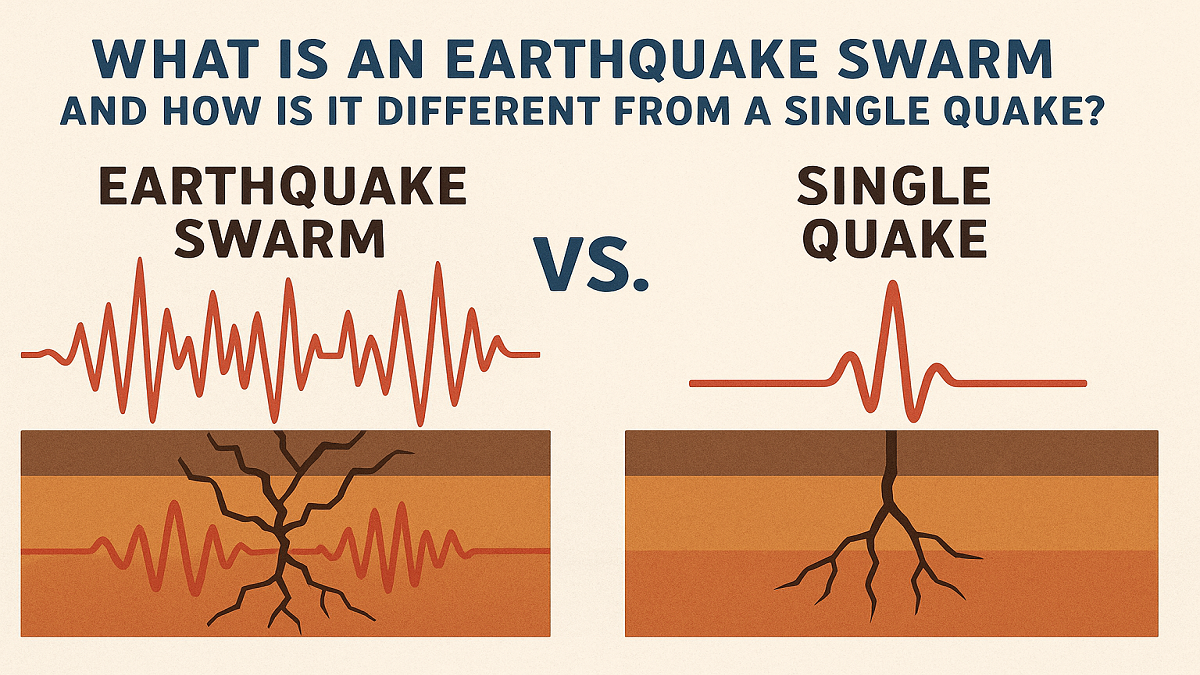
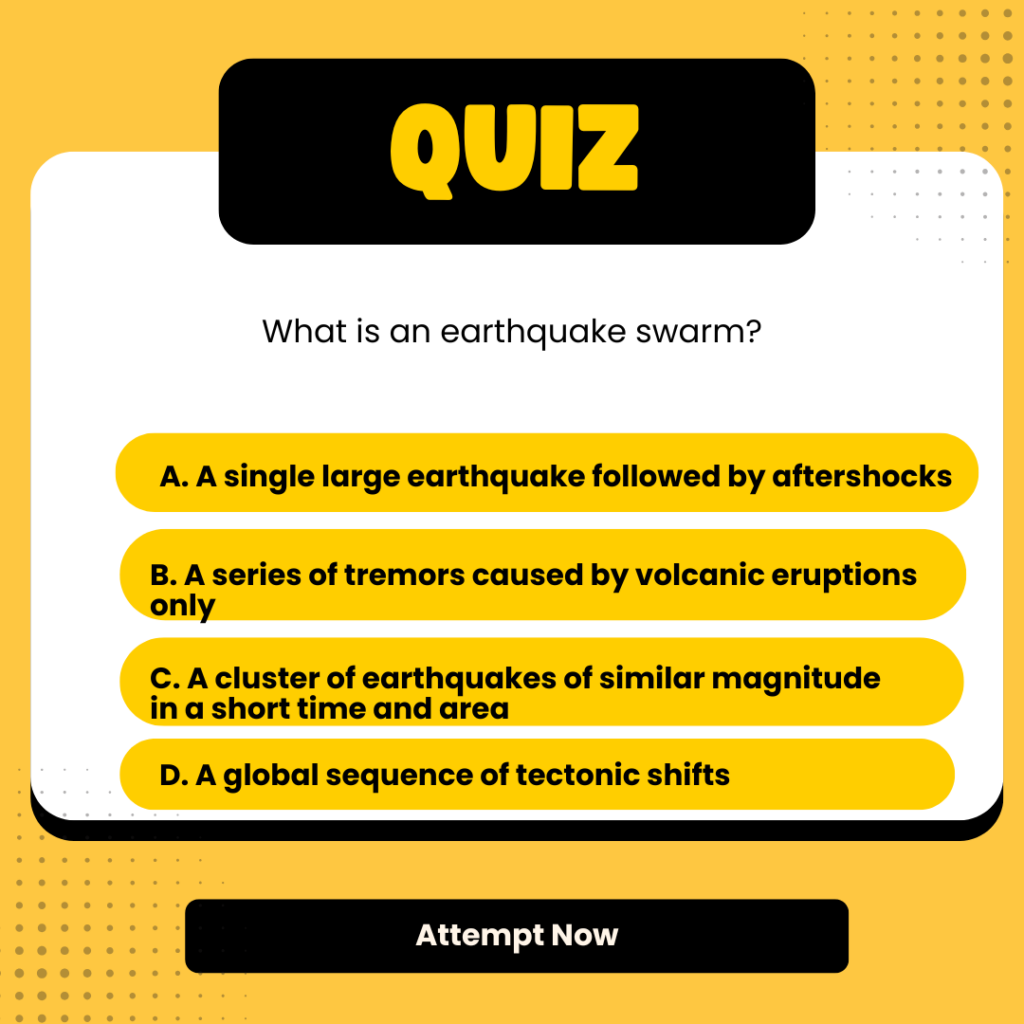
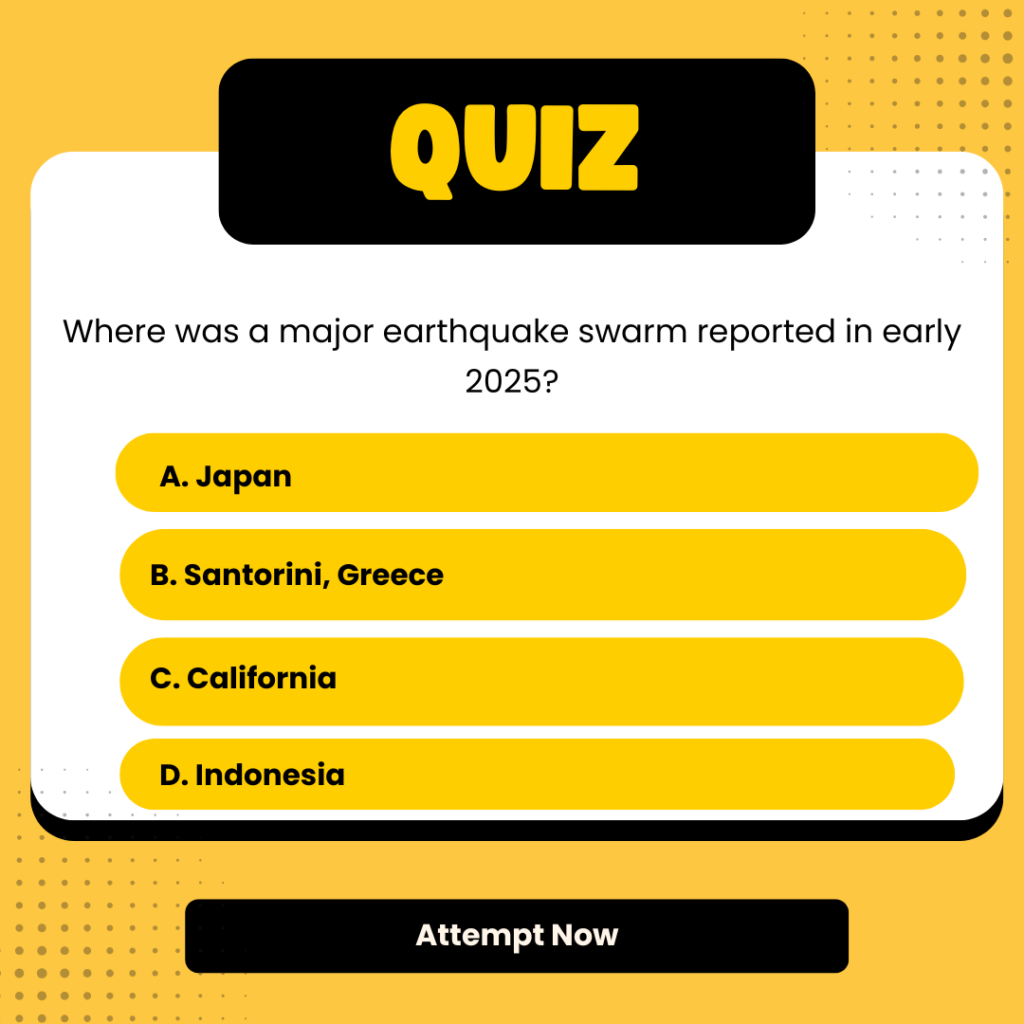

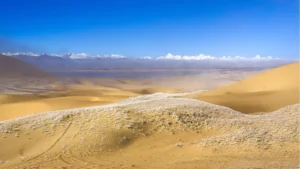 Which is the Highest Desert in the World...
Which is the Highest Desert in the World...
 Who was Known as the Father of Modern Cu...
Who was Known as the Father of Modern Cu...
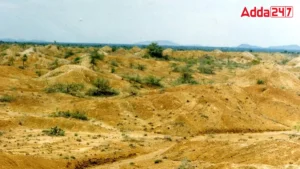 Which Indian State has the Largest Waste...
Which Indian State has the Largest Waste...







